Monisha Ghosh
Data Driven Environmental Awareness Using Wireless Signals for Efficient Spectrum Sharing
Oct 17, 2024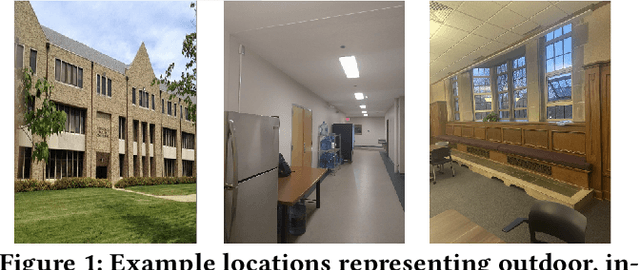
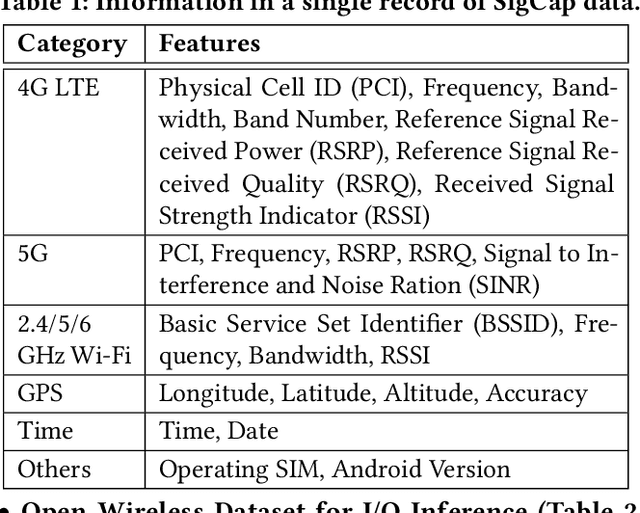
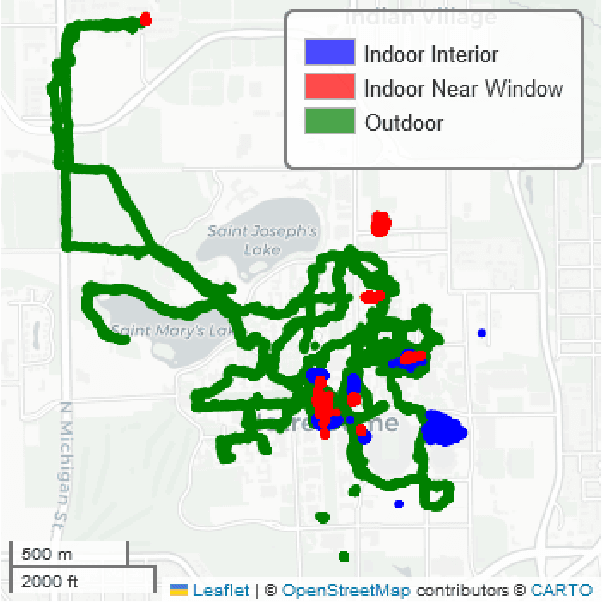
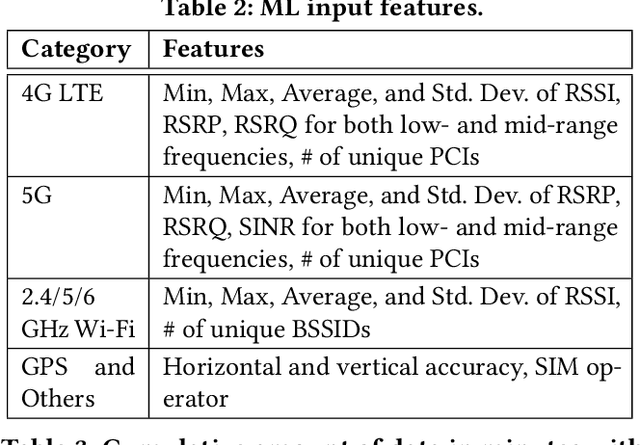
Abstract:Robust classification of the operational environment of wireless devices is becoming increasingly important for wireless network optimization, particularly in a shared spectrum environment. Distinguishing between indoor and outdoor devices can enhance reliability and improve coexistence with existing, outdoor, incumbents. For instance, the unlicensed but shared 6 GHz band (5.925 - 7.125 GHz) enables sharing by imposing lower transmit power for indoor unlicensed devices and a spectrum coordination requirement for outdoor devices. Further, indoor devices are prohibited from using battery power, external antennas, and weatherization to prevent outdoor operations. As these rules may be circumvented, we propose a robust indoor/outdoor classification method by leveraging the fact that the radio-frequency environment faced by a device are quite different indoors and outdoors. We first collect signal strength data from all cellular and Wi-Fi bands that can be received by a smartphone in various environments (indoor interior, indoor near windows, and outdoors), along with GPS accuracy, and then evaluate three machine learning (ML) methods: deep neural network (DNN), decision tree, and random forest to perform classification into these three categories. Our results indicate that the DNN model performs the best, particularly in minimizing the most important classification error, that of classifying outdoor devices as indoor interior devices.
Cellular Wireless Networks in the Upper Mid-Band
Sep 11, 2023



Abstract:The upper mid-band -- roughly from 7 to 24 GHz -- has attracted considerable recent interest for new cellular services. This frequency range has vastly more spectrum than the highly congested bands below 7 GHz while offering more favorable propagation and coverage than the millimeter wave (mmWave) frequencies. Realizing the full potential of these bands, however, will require fundamental changes to the design of cellular systems. Most importantly, spectrum will likely need to be shared with incumbents including communication satellites, military RADAR, and radio astronomy. Also, due to the wide bandwidth, directional nature of transmission, and intermittent occupancy of incumbents, cellular systems will need to be agile to sense and intelligently use large spatial and bandwidth degrees of freedom. This paper attempts to provide an initial assessment of the feasibility and potential gains of wideband cellular systems operating in the upper mid-band. The study includes: (1) a system study to assess potential gains of multi-band systems in a representative dense urban environment; (2) propagation calculations to assess potential cross interference between satellites and terrestrial cellular services; and (3) design and evaluation of a compact multi-band antenna array structure. Leveraging these preliminary results, we identify potential future research directions to realize next-generation systems in these frequencies.
SDR-Based 5G NR C-Band I/Q Monitoring and Surveillance in Urban Area Using a Helikite
Mar 03, 2023Abstract:In this paper, we report experimental results in collectting and processing 5G NR I/Q samples in the 3.7~GHz C-band by using software-defined radio (SDR)-mounted helikite. We use MATLAB's 5G toolbox to post-process the collected data, to obtain the synchronization signal block (SSB) from the I/Q samples and then go through the cell search, synchronization procedures, and reference signal received power (RSRP) and reference signal received quality (RSRQ) calculation. We plot these performance metrics for various physical cell identities as a function of the helikite's altitude. Furthermore, building on our experience with the collected and post-processed data, we discuss potential vulnerabilities of 5G NR systems to surveillance, jamming attacks, and post quantum era attacks.
Machine Learning enabled Spectrum Sharing in Dense LTE-U/Wi-Fi Coexistence Scenarios
Mar 18, 2020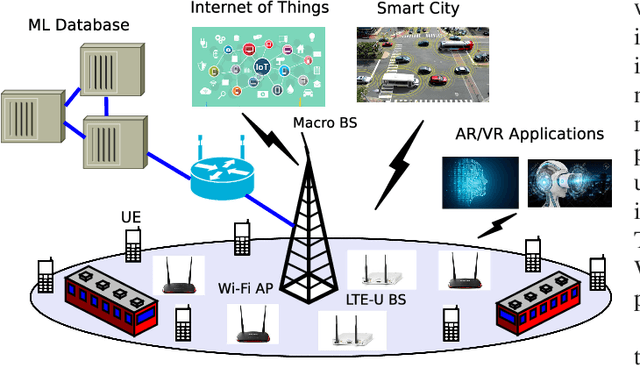
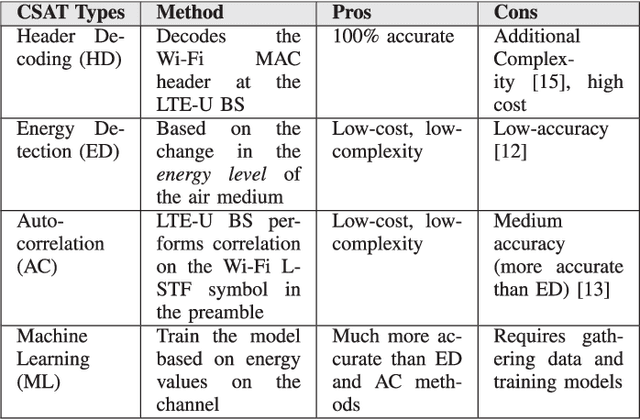
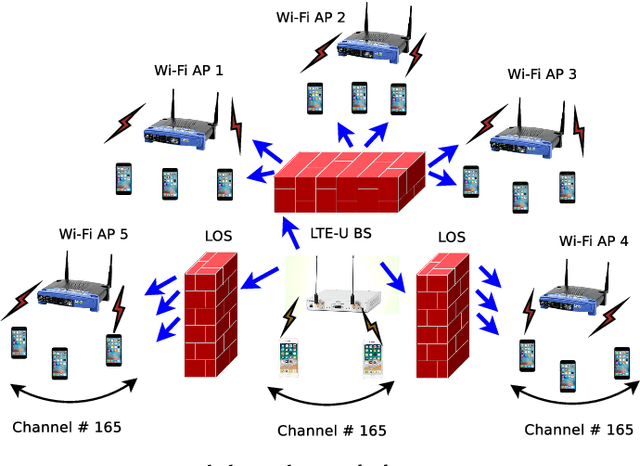
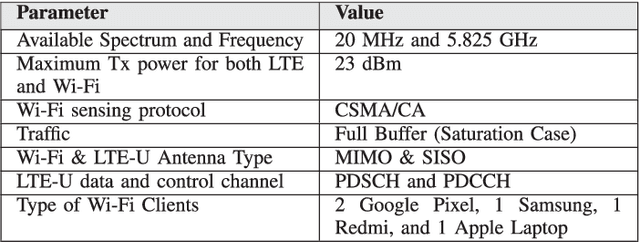
Abstract:The application of Machine Learning (ML) techniques to complex engineering problems has proved to be an attractive and efficient solution. ML has been successfully applied to several practical tasks like image recognition, automating industrial operations, etc. The promise of ML techniques in solving non-linear problems influenced this work which aims to apply known ML techniques and develop new ones for wireless spectrum sharing between Wi-Fi and LTE in the unlicensed spectrum. In this work, we focus on the LTE-Unlicensed (LTE-U) specification developed by the LTE-U Forum, which uses the duty-cycle approach for fair coexistence. The specification suggests reducing the duty cycle at the LTE-U base-station (BS) when the number of co-channel Wi-Fi basic service sets (BSSs) increases from one to two or more. However, without decoding the Wi-Fi packets, detecting the number of Wi-Fi BSSs operating on the channel in real-time is a challenging problem. In this work, we demonstrate a novel ML-based approach which solves this problem by using energy values observed during the LTE-U OFF duration. It is relatively straightforward to observe only the energy values during the LTE-U BS OFF time compared to decoding the entire Wi-Fi packet, which would require a full Wi-Fi receiver at the LTE-U base-station. We implement and validate the proposed ML-based approach by real-time experiments and demonstrate that there exist distinct patterns between the energy distributions between one and many Wi-Fi AP transmissions. The proposed ML-based approach results in a higher accuracy (close to 99\% in all cases) as compared to the existing auto-correlation (AC) and energy detection (ED) approaches.
Machine Learning based detection of multiple Wi-Fi BSSs for LTE-U CSAT
Nov 21, 2019
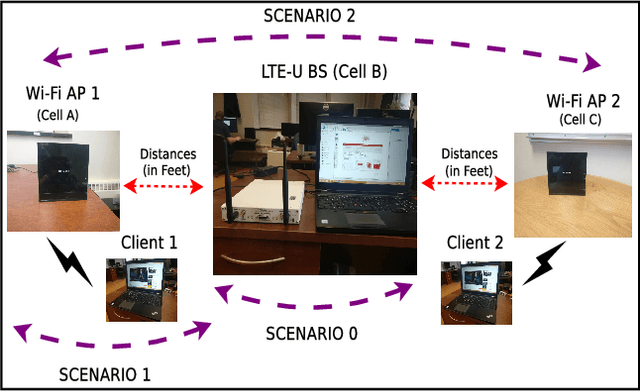
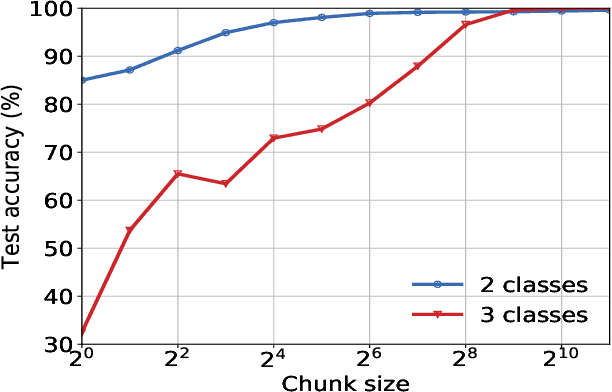
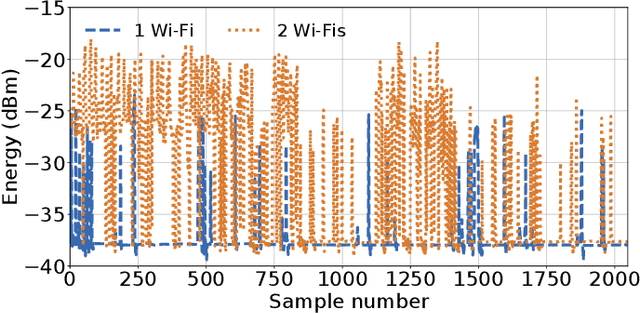
Abstract:According to the LTE-U Forum specification, a LTE-U base-station (BS) reduces its duty cycle from 50% to 33% when it senses an increase in the number of co-channel Wi-Fi basic service sets (BSSs) from one to two. The detection of the number of Wi-Fi BSSs that are operating on the channel in real-time, without decoding the Wi-Fi packets, still remains a challenge. In this paper, we present a novel machine learning (ML) approach that solves the problem by using energy values observed during LTE-U OFF duration. Observing the energy values (at LTE-U BS OFF time) is a much simpler operation than decoding the entire Wi-Fi packets. In this work, we implement and validate the proposed ML based approach in real-time experiments, and demonstrate that there are two distinct patterns between one and two Wi-Fi APs. This approach delivers an accuracy close to 100% compared to auto-correlation (AC) and energy detection (ED) approaches.
 Add to Chrome
Add to Chrome Add to Firefox
Add to Firefox Add to Edge
Add to Edge